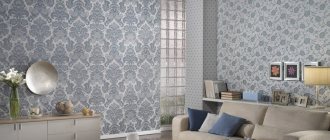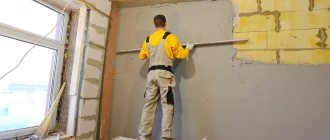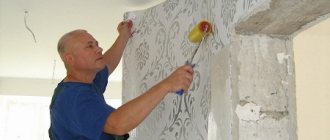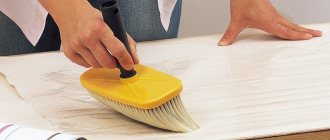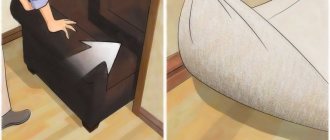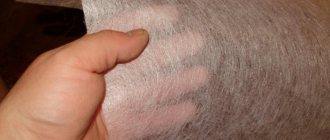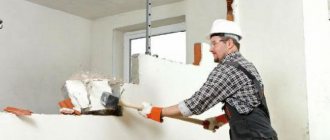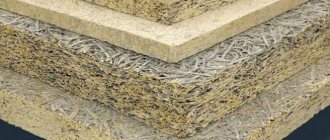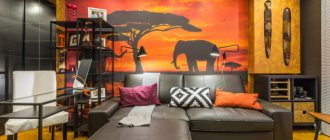0
20.06.2018
Today, stores have a wide range of wallpapers with any designs: flowers, vegetation, nature, abstractions, animals, geometric shapes, etc. Striped coatings are popular.
Striped wallpaper is often used to create other effects. They are used in conjunction with other materials to give originality to the room and a special style. But the material is very demanding and the rules of use must be followed. When is a striped pattern appropriate? What nuances to consider?
Striped wallpaper for walls: when used in the interior
When choosing this material, you should rely on three main factors:
- Location of stripes.
- Color spectrum.
- Room design.
Horizontal and vertical stripes give different visual effects. The former expand, the latter narrow. The type of stripes matters: wide ones stretch, and narrow ones, on the contrary, stretch.
Contrasting shades visually make the room smaller, and a pattern in pastel colors visually blurs the boundaries. The most common method of use is to cover several walls with striped wallpaper, and paint or paste adjacent surfaces to match. In this way you can adjust the space and play with the geometry of the room.
It is important to choose wallpaper with one texture, gloss or matte. This is necessary so as not to overload the interior.
Striped coverings are used in different stylistic directions: baroque, minimalism, pop art, classic, vintage and modern.
Wallpaper with stripes in pastel shades will create a pleasant and warm atmosphere. Bright and contrasting ones, on the contrary, add playfulness and are great for emphasizing a particular area of the room.
It should be borne in mind that a narrow strip causes ripples, so it is important to choose the right shades so that the coating does not irritate.
Wide, on the contrary, calms and relaxes.
In the kitchen, fresh shades look impressive and excite the appetite, and a green or red vertical stripe will refresh the furniture. The corridor can be decorated in light colors with bright inserts. Stripes in blue, lilac, and beige tones are suitable for the bedroom. The bathroom will be refreshed with green and white designs.
Rules for combining wallpaper
Combinations of all kinds of variations are welcomed in the design of a modern style. This is not only a combination of different color palettes, but also a combination of opposing materials and textures.
It is worth noting that thanks to the combination of wallpaper in the interior, not only decorative effects are created, but also the size and area of the room visually changes.
Such a combination will help zone the room, and if used successfully, you can disguise imperfections. But to achieve maximum results you need to know certain rules.
Striped wallpaper: when not to
Stripes are a tricky pattern, so you should know when not to use them in the design of a room:
- do not use a horizontal strip in a room with low ceilings;
- Vertical ones are not suitable for high ceilings;
- in a small room, do not use such wallpaper for all walls, it strains the psyche and reduces the space;
- in the nursery, do not use contrasting colors, they can cause headaches;
- The material cannot be applied to an uneven surface; any joints and defects will be clearly visible.
Everything you need to know about combining wallpapers
Wallpaper, as before, remains one of the most popular materials for wall decoration. But using this traditional material in a conservative way is completely optional. To make the room “play” in a new way, you can use such an interesting design technique as combining wallpaper.
This technique is becoming increasingly popular, since in modern life there is no place for depressing monotony. A wealth of sensations, changes, originality and freshness of thought - this is what modern people strive for, including when improving their homes. Combining wallpaper in the interior allows you to transform the appearance of rooms with minimal effort, completely change the perception of space, place accents, hide imperfections, and create incredible visual effects.
Wallpaper for walls with vertical stripes: when is it best to use
Wallpaper with vertical stripes narrows the space of the room, but visually raises the ceiling. This decoration is suitable for living rooms, especially those located on the north side. A vertical strip is an excellent solution for wide rooms with standard ceiling heights.
The vertical design attracts attention.
Pasting along the wall: pros and cons
The photo shows examples of the use of “striped” wallpaper in the interior of residential premises; as you can see, the lines can be directed both along and across
Wallpaper is traditionally glued vertically, that is, from top to bottom. This arrangement of finishing materials is recommended by the manufacturer, and this is no coincidence. But in some cases, you can neglect the traditional method of gluing in favor of a horizontal arrangement.
The pattern located across the strip of wallpaper is a significant reason for gluing horizontally
Arguments against longitudinal gluing:
- Additional consumption of materials . When gluing vertically, the excess in a whole strip in length is rarely more than 2.5 m (ceiling height). If you glue the wallpaper horizontally and cut off the excess along the entire length, you will end up with an unnecessary piece that spans the entire wall;
- It is more difficult to align the strip . If you glue vertically, under the influence of gravity, the canvas itself aligns from top to bottom, and you just have to guide and press it. If you glue horizontally, the material will sag, and therefore more careful adjustment will be required;
- Glue will leak . It is inconvenient to glue horizontally, since when leveling the canvas with a spatula, the glue will be squeezed out from under the top strip onto the bottom;
- Joints will be noticeable . Keep in mind that when gluing horizontally, the joints between adjacent pieces of material cannot be hidden. The reason for this is that the light in the room comes from the window. That is, if the vertical seams are not highlighted by light, then the horizontal seams, on the contrary, will be highlighted.
The photo shows a hallway that has been visually lengthened by alternating longitudinal dark and light lines
Arguments for a longitudinal arrangement:
- If materials of different colors are combined . You can glue wallpaper horizontally if you need to longitudinally combine materials of different colors or rolls with different patterns;
- If we glue the border . A border is a strip of thick paper that is usually glued at the top or center of the wall. Of course, the installation of the curb is done horizontally.
- Features of the drawing . Let's say you bought wallpaper that imitates wooden lining and the pattern on the canvas is applied along the length of the roll. To make imitation wooden lining or similar designs look more realistic, it would be correct to place them not across, but along the wall.
How to choose furniture to match striped wallpaper
Select furniture carefully, depending on the color scheme of the walls. If the surface is in bright and contrasting colors, then it is better to opt for simple and light furniture. By adding decorative elements with shades of wallpaper, for example, pillows in the same colors or chair covers.
In a room with pastel and plain soft walls, bright furniture with wood elements looks great.
The choice also depends on the style: classic adheres to clear and unpretentious lines in design; in Provence, forged furniture elements and wicker chairs look good; minimalism allows for the presence of metal, such as chairs and tables.
Coverings with stripes for walls are a real find. With their help, you can visually enhance the room, expand it, or, conversely, narrow it. Give the desired shape or focus on a particular surface.
Combining wallpaper: standard techniques
Combination of plain wallpaper of similar shades
This option is suitable for a simple interior or for cases where the walls serve only as a background and there is no need to focus attention on them. In this case, you need to choose wallpaper of several shades, one of which will be more saturated. The best option is two shades, for example, plum and indigo, azure and aquamarine, emerald and veridian, sand and ivory.
Balancing a large pattern with plain wallpaper
Wallpaper with large elements looks very impressive, but if it is glued around the entire perimeter of the room, it clutters it and can be overwhelming. A good solution would be to combine them with wallpaper of a harmoniously selected tone without a pattern.
Combining wallpaper with different patterns
A very interesting and bold combination, but at the same time the most complex, requiring impeccable taste and a sense of proportion. Designers recommend using no more than three different types of material.
Here are a few win-win combinations that will help you consistently delight your guests:
- stripe + floral pattern;
- abstraction + stripes or geometric shapes;
- floral wallpaper + wood pattern.
The shape of the images can be different, the main thing is not to forget about color compatibility, the shades of the patterns should have something in common.
Combination of wallpapers of different colors
This technique also obeys certain rules:
- bright, active colors are best combined with discreet, neutral ones;
- Contrasts look very impressive - black and white, yellow and blue;
- When choosing colors, you need to make sure that at least one of them is repeated in interior details, for example, in curtains, furniture, sofa cushions.
Original design
An original option for wallpapering in the bedroom is using wallpaper inserts. First, you should stick on dim, plain background canvases. Next, you need to make inserts from, for example, non-woven wallpaper. They can be made in different sizes and shapes:
- the classic version involves the use of rectangular structures, as in the photo below;
- It is also possible to glue geometric shapes.
Combination helps to visually highlight different functional areas in the room. An accent is often used in the living room when the wall behind the TV or fireplace is highlighted in a color that contrasts with the rest in the room. In the photo in the hall there is such an area behind the TV.
You can use a patchwork combination, when the walls of the room are covered only with inserts, without a background. The main thing is that the harmony of materials is maintained when implementing this method. You can glue multi-colored blocks randomly, but you need to combine these inserts into a design or pattern.
Option for wallpapering in the kitchen:
If there are many niches or arches in the room, then they must be used when creating an original interior. Designers recommend highlighting and playing up such places. You should glue wallpaper of contrasting colors or bright embossed fabrics:
- if the wallpaper is light, then make the niche dark;
- small main pattern, and decorate the protrusion with a large pattern.
The photographs below show wallpapering in contrasting colors in the living room and bedroom:
Different options for wallpapering a kitchen are shown in the video:
Recommended Posts
3d wallpaper for the living room + photo
How to properly glue wallpaper on drywall with and without putty…
How to hang wide wallpaper
Beige wallpaper in the interior
How to choose two types of wallpaper for the living room
How to glue wallpaper with your own hands

